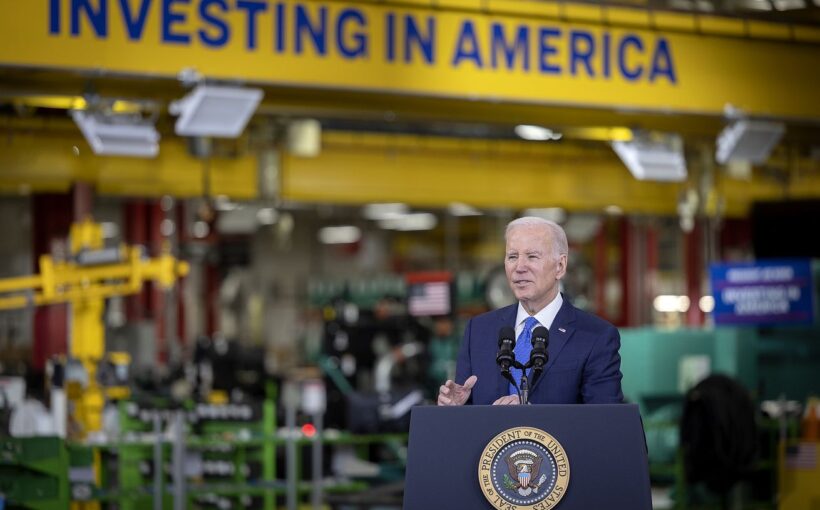
The Biden administration will funnel $7 billion into seven different “hubs” for hydrogen production across the US. It’s part of President Joe Biden’s plan to transition the nation to clean energy, even though the environmental benefits of hydrogen still hinge on overhauling the way the fuel is traditionally made.
Hydrogen combustion creates water vapor, unlike fossil fuels that release greenhouse gas emissions when burned. That’s seen as especially valuable for cleaning up aviation, maritime shipping, and heavy industries like steel that are more difficult to run on renewable energy and batteries. The tricky part with hydrogen is cleaning up pollution from the process of making it. Most hydrogen today is made using fossil fuels, and a few of the new hubs will continue using gas to produce hydrogen.
The Biden administration has been planning for these hubs since last year. While visiting Philadelphia today, he’s expected to name seven locations selected for funding through the Bipartisan Infrastructure Law. The hubs are expected to catalyze another $40 billion in private investment, according to a White House press release.
A hub in the Pacific Northwest, spanning across Washington, Oregon, and Montana, will use renewable energy to produce hydrogen. A California hub will use renewable energy and burn biomass. Two hubs in the mid-Atlantic (Pennsylvania, Delaware, and New Jersey) and the heartland (Minnesota and the Dakotas) will rely on a mix of renewable and nuclear energy.
It’s still much more expensive to produce hydrogen using clean energy than it is to make it the old-fashioned way with gas. The Biden administration has a goal of slashing the cost 80 percent to $1 per kilogram this decade. To do that, Biden authorized the use of the Defense Production Act last year to boost domestic supply chains for clean energy technologies, including electrolyzers that split water molecules to get hydrogen.
The alternative to electrolysis is a process called steam-methane reforming. Methane, the main component of so-called natural gas, reacts with steam to produce hydrogen in a process that still releases carbon dioxide. The plan is to capture any carbon dioxide emissions from gas at the new hubs, but the technology to do that is still very expensive and unproven at scale. Moreover, leaking methane, a very potent greenhouse gas, is a huge problem with gas infrastructure that capturing CO2 alone doesn’t solve.
An Appalachian hub, encompassing West Virginia, Ohio, and Pennsylvania, will make hydrogen using gas. A Midwest hub in Illinois, Indiana, and Michigan will use gas, renewables, and nuclear energy. A hub on the Texas Gulf Coast will rely on gas and renewables.
Eventually, the Biden administration plans for all seven hubs to cumulatively cut 25 million metric tons of CO2 emissions annually, roughly equivalent to getting more than 5.5 million cars off the road a year. Clustering hydrogen production in “hubs” is also a cost-saving measure since facilities can share infrastructure like pipelines and storage. The Biden administration is also promising thousands of jobs, and the hubs fall within his “Justice40” Initiative that commits the administration to making sure that 40 percent of the benefits from federal investments go to communities “marginalized, underserved, and overburdened by pollution.”



